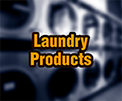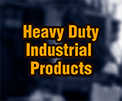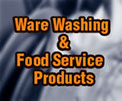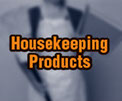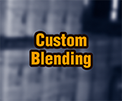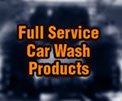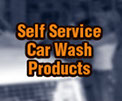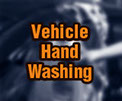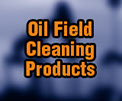Royal Custom Products
4844 Almond
Dallas, Tex75-0172

4844 Almond
Dallas, Texas 75247
Ph: (214) 630-4386
Ph: (866) 989-1030

Knowledge Center
The Chemistry of Cleaning
By Bob Vint
Everyday, salespersons wonder about how competitors can sell their products for so much more than what the market will seem to bare. It’s true, that certain brand products can carry more creditability than others, which makes buyers willing to pay more for those products rather than other comparable non-branded generic products offered at lower prices. For example, which brand do you think people would be willing to pay more for; Proctor & Gamble’s "Tide” or Thrift’s "Laundry Soap”, BMW or Ford? It’s a fact that an educated buyer will always pay more for a product than an uneducated buyer.
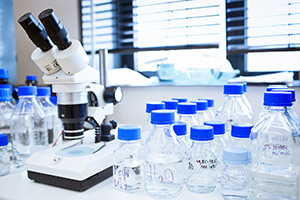
Sometimes, it’s all in the professionalism that makes the buyer part with their bucks. Here is something you may find hard to believe….My firm in the last 22 years, has never sold any SOAP! I can almost assure you that neither have any of my distinguished colleagues either. Why, because we all sell Detergents! Remember Granny on the Beverly Hillbillies? She was always around the cement pond making her famous lye soap. Soaps and detergents have the same structures and work in the same way. The only real difference between soap and detergent is that soap is made from natural materials, animal fat and sodium hydroxide (lye).
Where am I going with all this? My point is that with a little professional training that was similar to what I received when I worked for one of the big guys, we all could make a better margin of profit for our products. Increasing our chemical vocabulary, as well as educating our clients, would be a good start. First, let’s stop calling our product SOAP, because it’s not! Start using the term DETERGENT(S). From this point on, see how that sounds to your customers. I will explain the similarities between soap and a detergent later in this discussion.
Now, let’s first start out by looking at what the pH scale is and how to use it. We have all heard and used the term pH when selling detergents, but how many of us really know what pH is or what it stands for? Over the years, I have heard of some good stories about what pH stands for…is it some ones initials, or is a chemical symbol? Neither! It is very important to understand this pH scale because the knowledge that is locked within the mystery of this scale, once opened, can be logically used to solve the many cleaning problems that you will encounter.
What is pH? Good question and may I add….not one that is easy to answer. pH is the measurement of the concentration of -hydrogen ions” (shown in chemical notation as H+) in relation to the concentration of -hydroxyl ions” (shown in chemical notation as OH-). An excess of H+ (hydrogen) ions over OH- (hydroxyl) ions makes a solution an acid. Conversely, an excess of OH- (hydroxyl) ions makes the solution an alkaline (often referred to as basic).
All solutions that are made up of water can be measured for their pH. The pH scale runs numerically from 1 to 14. On this scale, a solution that has a pH from 0 to 6.9 is considered to be an acid. It is acidic because it contains a larger amount of hydrogen ions.
A solution that measures from 7.1 to 14 on the pH scale is considered to be basic (or alkaline) in nature, because it has a larger amount of hydroxyl ions. As you guessed, a pH of 7.0 is neutral because it contains equal amounts of hydrogen (H+) and hydroxyl (OH-) ions. Pure, unpolluted rainwater or distilled water is neutral, because it has a pH of 7.0.
It is interesting to note that the pH scale is logarithmic scale. This means that a change of one pH unit indicates a ten fold increase in the concentration of hydrogen ions. For instance, a solution that has a pH of 2 has ten times as many free H+ ions as a solution with a pH of 3!
Non-aqueous liquids or solutions (solvents such as gasoline, mineral spirits, and chlorinated safety solvents) have neither hydrogen nor hydroxyl ions. They do not have a pH, because they do not contain any water. As I mentioned before, pH is a characteristic of water solutions only. Without water, we cannot have a pH.
To put this in an easier to understand way, pH is a qualitative measurement and Alkalinity and Acidity is a quantitative measurement.
Now, let’s go back and look at what a detergent is, and how it differs from Soap. Detergents usually contain some combination of ingredients to help them do their job, and simply remove unwanted soils! The next words I want you to learn, are these listed below. Learn these and incorporate them into your sales vocabulary starting today. The following ingredients, all have a specific job function in a cleaner formula:
CLEANING AGENTS
Solvents
Surfactants: detergent and soap
Penetrating and wetting agents
Saponifiers
Builders
Let’s take a look at how these different ingredients go into a cleaner, keeping an eye on the specific job that each ingredient will do. Remember; don’t try to talk over your clients head.
1. Solvents are usually petroleum based liquids, that aid in "dissolving” and help carry suspended soil away from the surface. Did you know that water is the most commonly used solvent? Other solvents may also be used; chlorinated solvents and mineral spirits are examples. These are especially effective on petroleum soils, where water could damage surfaces such as wood.
2. Surfactants found in both soaps and detergents, are ways to make water wetter. The word surfactant comes from "surface active agents”. Here is a simple example to show your customer how surfactants work. Put a bead of water on the hood of a vehicle, add a little detergent to the bead of water and watch as the water sheets off the vehicles surface.
3. Penetrating and Wetting Agents allows water to surround soil particles that would otherwise repel the water. Once this is done, wetting agents enter the soil(s), and loosen the bonds emulsifying the greasy petroleum into droplets, that can be dispersed thoroughly.
4. Chelating Agents "tie up” the hardness in hard water. Calcium, Iron and Magnesium are common minerals found in hard water. Another way to look at it is, if you are washing with hard water, you are washing with dirty water. Always carry a test kit for hard water and test the water prior to trying to sell your detergent to the customer. Trust me; he will be impressed with this type of professionalism.
5. Saponifiers: Saponification is the process of converting fats to soap. What? Here is an example we all have experienced at some time. Remember getting that heavy duty caustic cleaner on your hands and trying to wash it off? Your hands just felt slick and soapy and you never really did feel like you got off all the soap. Well, you just added a caustic to the fat in your hands and Saponification took place. You just made your own soap.
6. Builders are what give your products the strength or muscle, if you want to call it that. They are either strong alkalis (Caustics) or Acids. The use of these, is what enables your super cleaner to withstand heavy soil loads.
SOILS
Now here, you are ready to clean the world of dirt, but there are just a few more things you need to know. If you can see it, then that type of soil usually dictates the type of cleaner that you will use to remove it. Soil is nothing more than matter in the right or wrong place. For example, grease in a frying pan is good; grease on the stove top is bad. Dirt in the family garden is good; dirt on your wife’s white carpet is bad – very bad!
There are various types of soil:
1. Inorganic soil: Matter that was never "alive”, and thus contains no carbon.
Scale and lime deposits, such as water spots.
Rust, corrosion, and oxidation.
Minerals and rock formation
2. Organic soils: Matter that once "lived” and that does contain carbon.
Body oils and animal fat.
Carbohydrates and proteins.
Mold and yeast.
Bacterial and animal waste.
3. Petroleum or Hydrocarbon soils: Motor oils, axle greases, wax, gums and other products made from petroleum. These soils contain no water – in fact they repel water – and thus do not have a pH. They often require another petroleum based solvent to remove them.
4. Combination soils: These are soils that contain an inorganic, plus an inorganic soil and/or petroleum substance. These soils are difficult to remove, because they are hard to identify. Once identified, they usually require a combination type cleaner – alkalines and solvents or acids and solvents.
The Law of Mass Cleaning Action
Inorganic soil (mineral scale) is cleaned with acid cleaners.
Organic soil is cleaned with alkaline cleaners.
Petroleum soil is cleaned with petroleum based cleaners,
Combination soil is cleaned with combination cleaners, i.e. Chlorinated alkaline detergents used for food processing plants.
But we must also remember to take the surface into account. For instance, water based cleaners can damage delicate wood surfaces, so a petroleum based cleaner containing no water – is appropriate.
We must also pay attention to the aggressiveness of a cleaner. A marble surface would be attacked by a strong acid cleaner. If we need to use an acid cleaner to remove inorganic soil from marble, we must use a very mild (non-aggressive) acid cleaner.
The law of mass cleaning action, expresses a relationship between time, action (physical), concentration and temperature in the process of removing soils. This law states, that if you decrease any on of these factors, we must increase one or more of the remaining factors in order to maintain equal cleaning ability.
Cleaners can be formulated to do a specific job. Sometimes a cleaner will not contain many of these ingredients; sometimes it will contain almost all of them. This long list of ingredients might give you the idea that a cleaner is a very complicated mixture, and indeed, it is. A good cleaning solution must be complex, because it has much to do. "Cleaning” (or "soil removal”) is a series of events whereby the soil is wetted, broken up, suspended, dissolved, dispersed, and prevented from re-depositing. Also, the cleaner can be formulated to work on a specific soil or a specific surface. Ingredients can be added or deleted to make a special purpose cleaner.
Selling detergents can and should be looked upon as the financial backbone of any cleaning business. Just think for a moment…when you sell a detergent, you sold a product that is designed to go down the drain and then purchase over and over again.
Bob Vint
© Copyright 1988-2023 • Royal Custom Products, Inc.

